Best pruning shears in 2025: Tested and rated
We tested a range of tools to find the best pruning shears you can buy
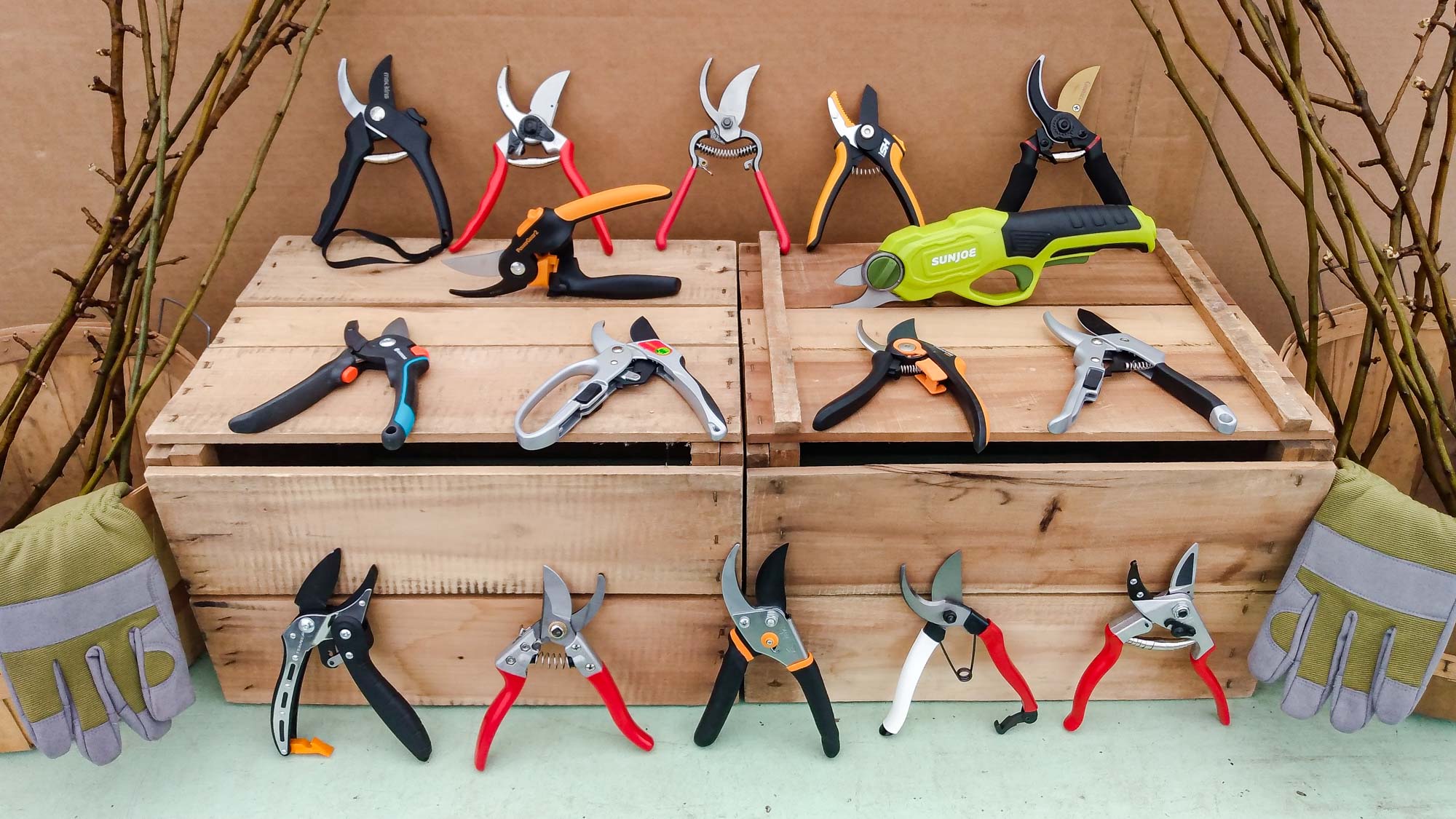
I’m Farmer Rich, a fruit and vegetable farmer who uses pruning shears throughout my daily work. I also regularly test and develop consumer products, so I know how to vigorously review pruning shears.
But whether you are a professional like me, a hobbyist gardener, or are getting your fingers green for the first time, you will need one of the best pairs of pruning shears. And for some, you might even require a collection for different tasks.
From experience using and testing many pruning shears, I know you’ll want a pair of pruners that is comfortable to hold, has a sharp blade, and gives a consistent clean cut. Plus, you’ll want a pair that will provide reliability and longevity of use.
To find the best pruning shears, I tested a wide range of bypass, anvil, and ratchet pruners to see if they made the cut. Following strict testing criteria, each pair of pruners had to make at least 100 cuts through wood and stems. The intention was to test the sharpness and consistency of the blade and its durability. I also assessed the handles for their comfort and grip and the pruner’s overall weight and shape of the design. The bypass pruners were even tested at the very end to see how they cut through a single sheet of paper.
At the end of the testing, my vote for the best pruner overall was the Felco 6 for its comfortable ergonomic grip and lightweight design. Its cousin, the Felco 32, came in as the best anvil pruner. However, the best pruner for you will depend on your needs, and if you have a problem with your hands, the Gardener’s Friend ratchet pruners will make a good choice.
The quick list
Here's the best pruning shears you can buy right now based on our comprehensive testing. Scroll on for our full in-depth reviews.
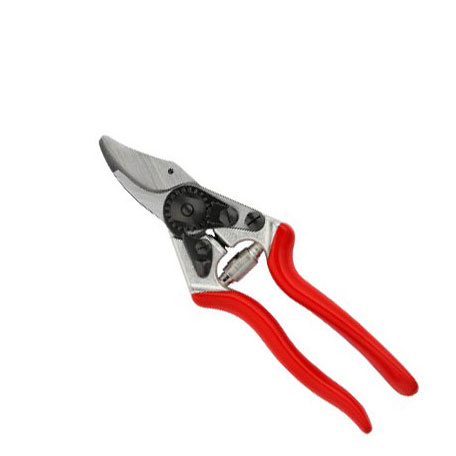
This Felco bypass pruner is perfect for medium-sized hands and comes with a comfortable ergonomic handle. It has a sturdy design, yetis lightweight and give a consistent performance.
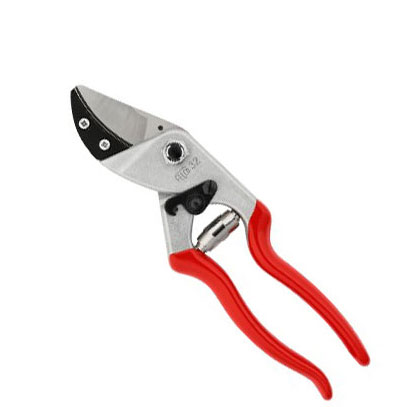
This Felco anvil pruners is best for large hands. it has a very strong carbon steel blade and a rugged design that can last a lifetime. It's a heavy-duty pruner suitable for medium to heavy work.
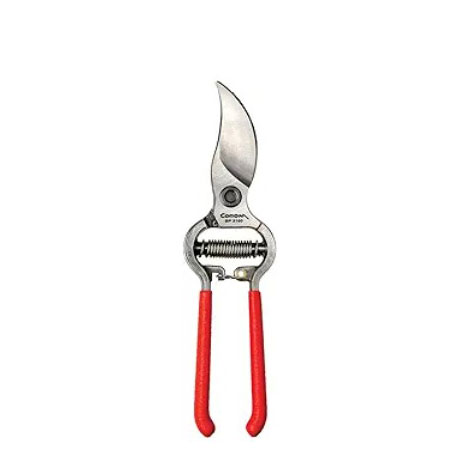
Suitable for medium to large hands, this pruners can be used by both right and left handed users. The carbon steel blade is strong and gave consistent cutting results and it's a no-frills pruner that gives a solid performance.

The Felco 2 pruner is an industry favorite and has an extremely sharp blade. It's even become known as the last pruner you'll ever buy. When tested it consistently gave a smooth and clean cut and was easy to use repeatedly.
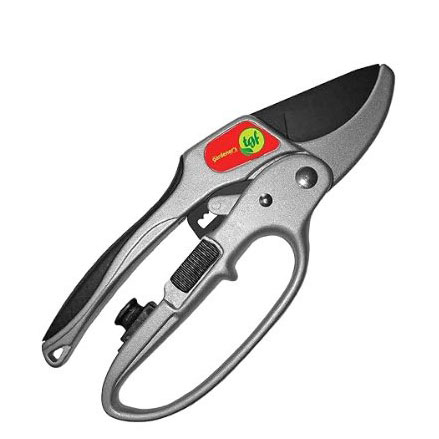
This ratchet pruner easily cuts through thick and hard branches by providing four handle actions, greatly reducing the strength needed. That's why this pruner is ideal for those with hand strength issues.
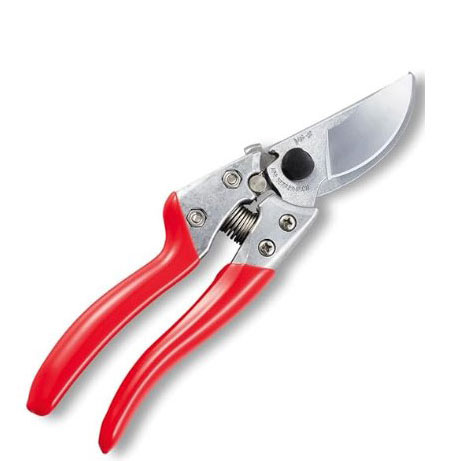
This ARS pruner has an incredibly sharp blade and a comfortable non-slip grip. It's smooth to operate, meaning there is less hand fatigue. However, it needed tightening after 50 cuts.

As the owner of McCollum Orchard, a fruit and vegetable farm in my family for over six generations, I have plenty of practical experience testing equipment. Apart from my day job, running the farm, I also regularly test and develop consumer products, which include farming and gardening equipment for the US and international markets.
I have hands-on experience throughout the industry and know how to dive deep into product testing to provide insightful reviews and authoritative recommendations.

I’m a staff writer on the Homes team at Tom’s Guide, and apart from loving the interior of my home, I enjoy spending time outside in my yard. My favorite plant is Hydrangea Annabelle and I never tire of its beautiful blooms. But, like most plants in my yard, it needs pruning and taking care of to ensure it springs back into bloom each year. Over the years, I’ve found using a reliable pair of secateurs is a must, but I don’t keep to one pair for all jobs, as some plants need a firmer touch, which is where anvil secateurs come in. I also have a favorite pair that I find particularly comfortable to hold. So, with my experience talking to gardening experts and using secateurs in my own backyard, I oversee the best pruning shears buying guide.
Best pruners you can buy today
Why you can trust Tom's Guide
Best overall
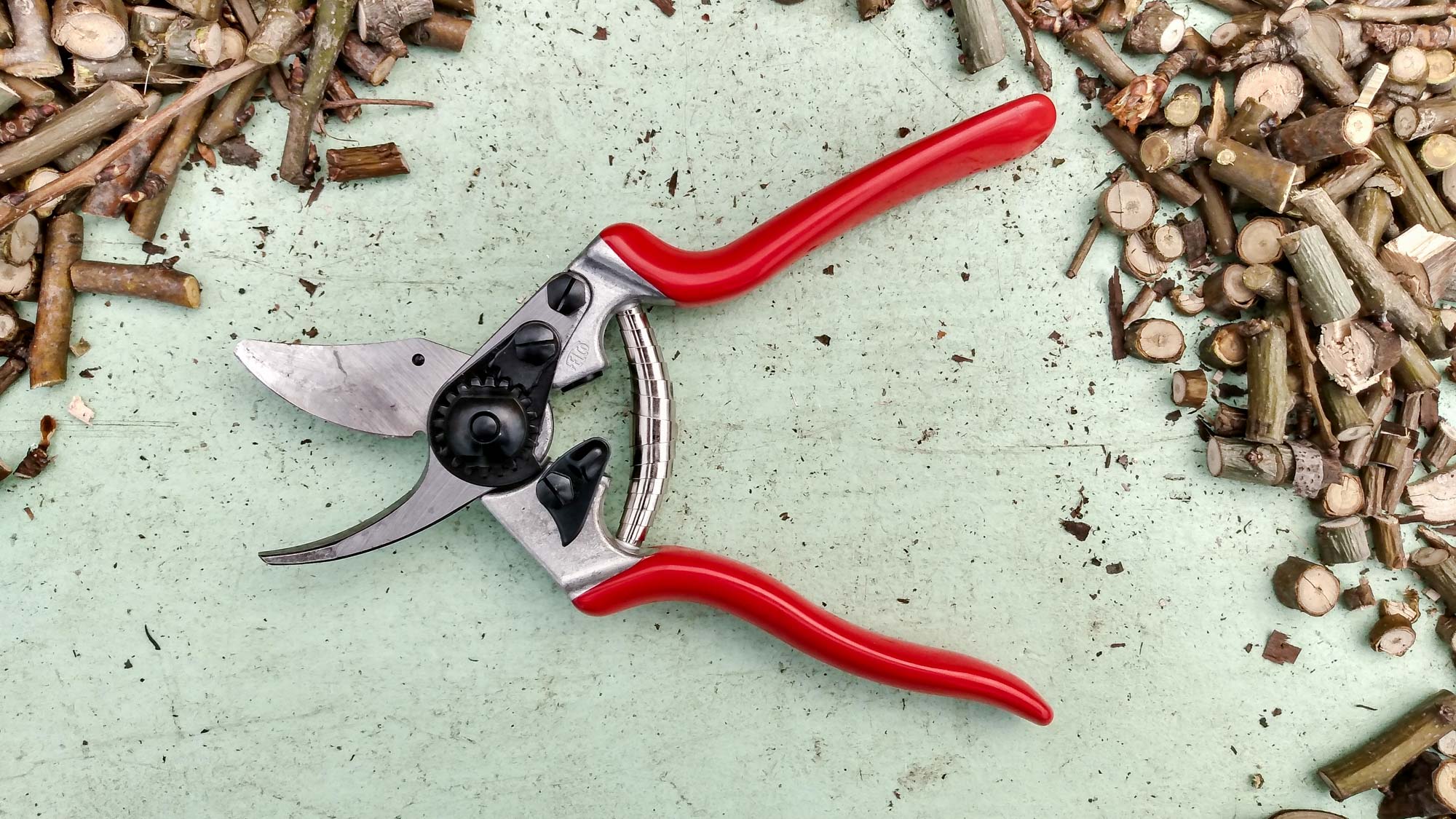
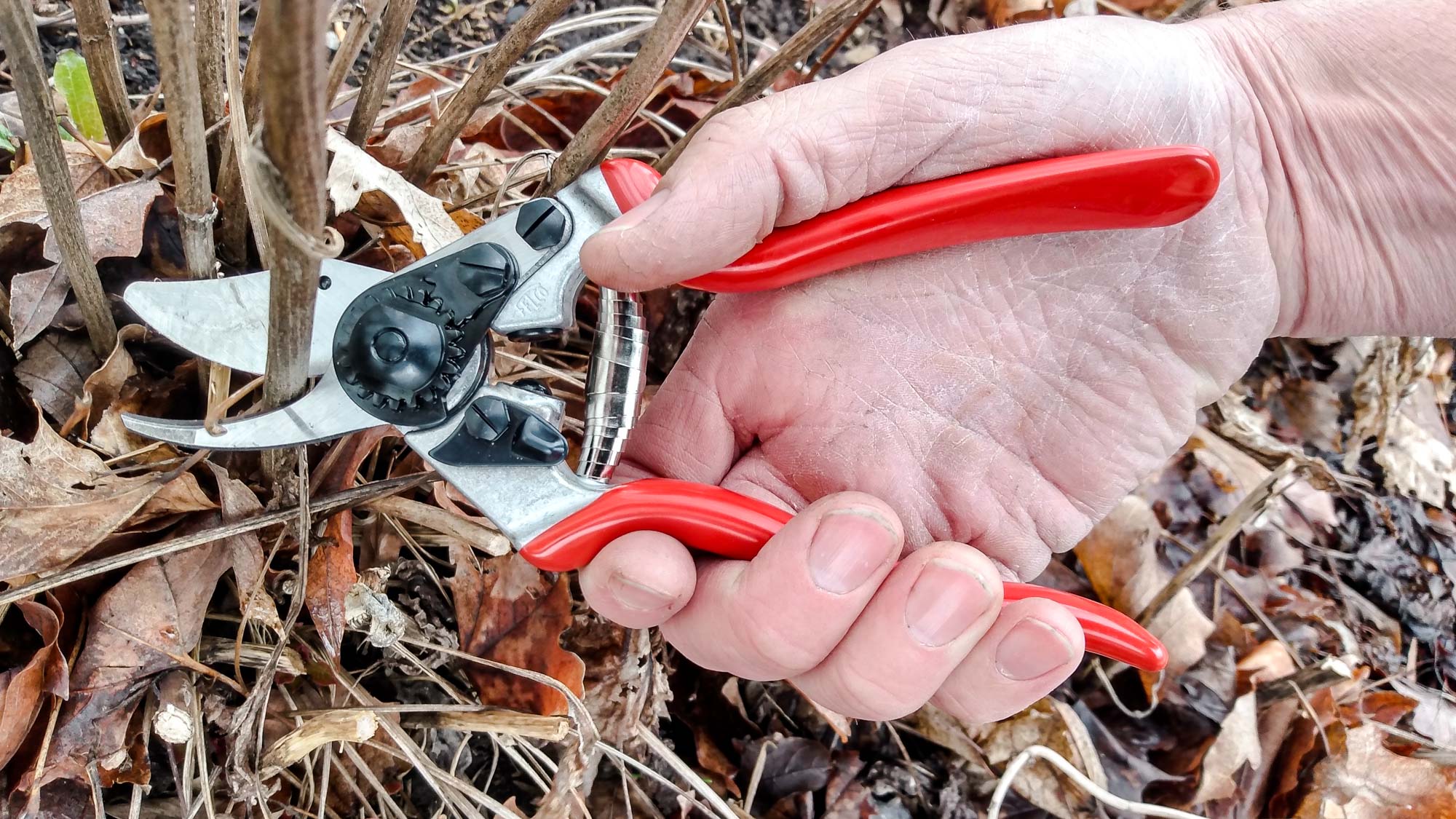
1. Felco 6
Our expert review:
Specifications
Reasons to buy
Ever since the invention of the Felco 2 model in 1948, Felco has been an international leader in hand pruners. The Felco 6 took the best parts of their previous models and combined them with great ergonomics and a slightly more compact design. It is a professional grade pruner designed with the lawn and garden user in mind.
The Felco 6 is smaller and more light-weight than its predecessors, but is still rated to cut .8-inch branches. It is made for medium-sized hands, but also worked well for large hands when we put it to the test. The ergonomics designed in this tool made it very comfortable to use and noticeably reduced hand fatigue. Although it is designed for right-handed individuals, it was comfortable and worked well in the left hand as well.
This pruner has an intuitive thumb lock, easily adjustable hinge mechanism and readily available replacement parts. The bright red handle also means you will be unlikely to lose it in the field. Its snub-nosed blade created a clean, reliable cut after well over 100 cuts on both dry and green wood. In fact, it was still sharp and tight enough to cut through paper like a new pair of scissors.
Although many pruner brands offer lifetime warranties, it is usually best to purchase a reputable pruner that will last a lifetime. Fortunately, Felco pruners have both the reputation of lasting a lifetime and offer a limited lifetime warranty. Overall, the Felco 6 is a fantastic pruner that will undoubtedly provide years of use.
If hand size is a concern, but you want the same functionality, Felco took the design of the Felco 6 and created the Felco 8 for large handed individuals and the Felco 14 for smaller hands.
Best anvil pruners
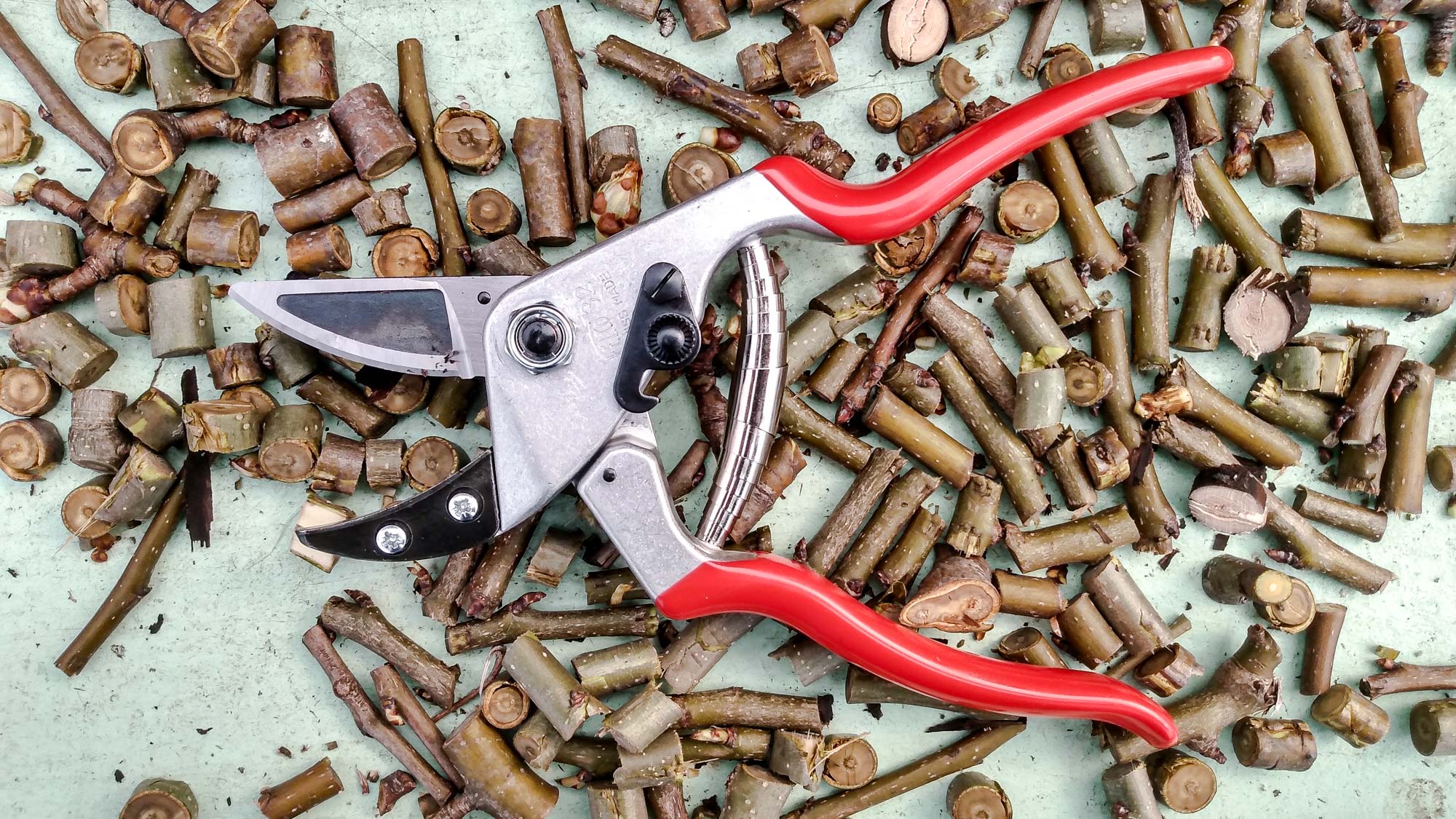
2. Felco 32 Anvil Pruner
Our expert review:
Specifications
Reasons to buy
Reasons to avoid
As with most Felco products, the Felco 32 Anvil Pruner is an incredibly rugged, well-made pruner trusted for years by professionals. The hardened steel blade, metal anvil and wide grip smoothly cut through 1-inch thick sticks. The blade closes precisely on the anvil, making a complete cut with minimal crushing or stripping of bark. The bright red handle is easily found if put down, and replacement parts are readily available. While the pruner can be used in both the left and right hand, the thumb lock is designed for right-hand use.
The Felco 32 does require a large hand to operate and may be unwieldy for those with reduced hand strength or carpal tunnel issues. It is an expensive pruner, but if you divide the price over the lifetime of the tool, it is very reasonable. Overall, this heavy-duty pruner performed consistently well with a wide assortment of sticks and branches. If the handle size isn’t an issue, then this would be a great pruner for anyone doing moderate to heavy lawn and garden work.
The Felco 32 Anvil Pruners is also one of the best gifts for new homeowners; check out our guide for more inspiration.
Best heavy-duty
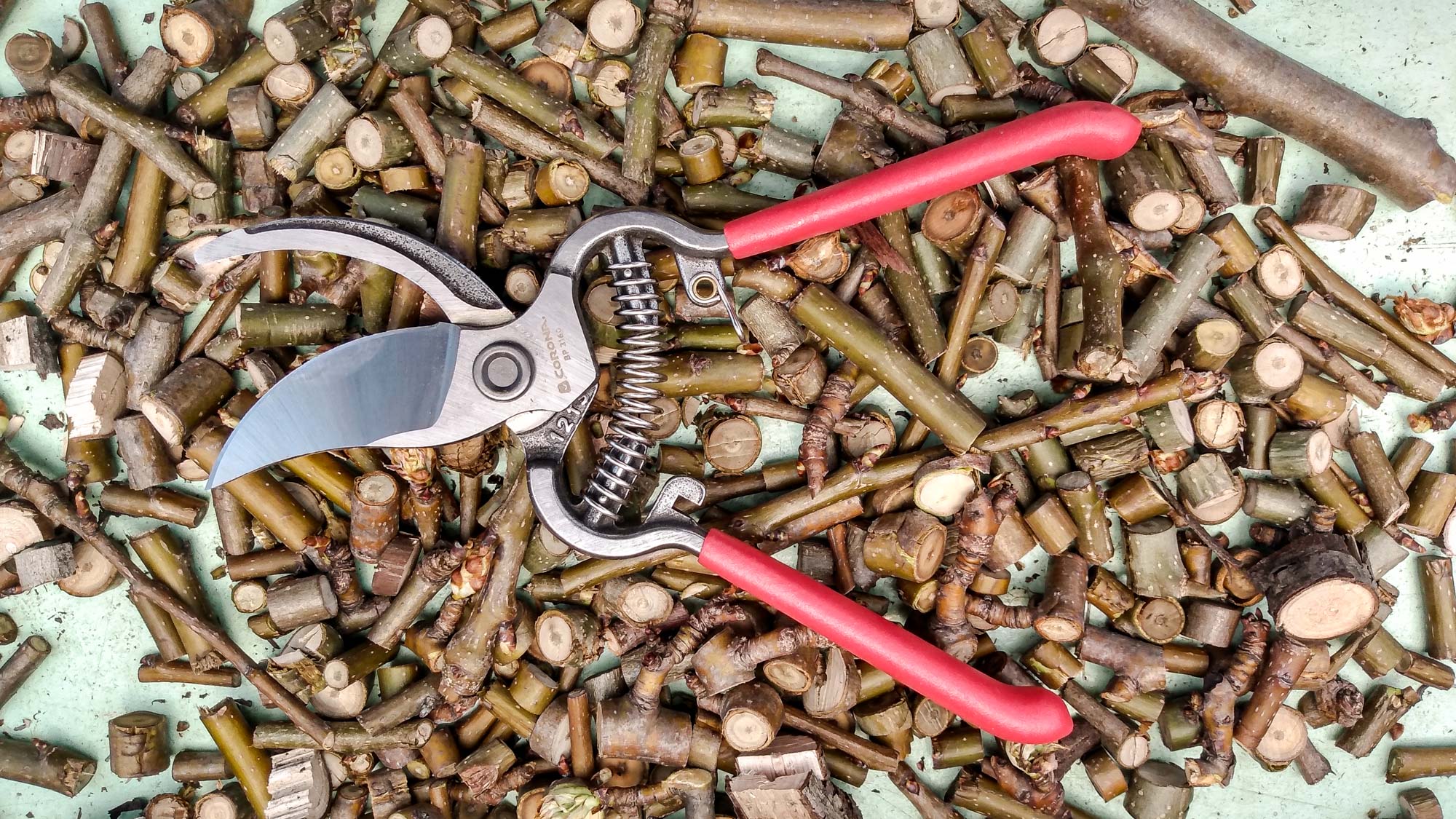
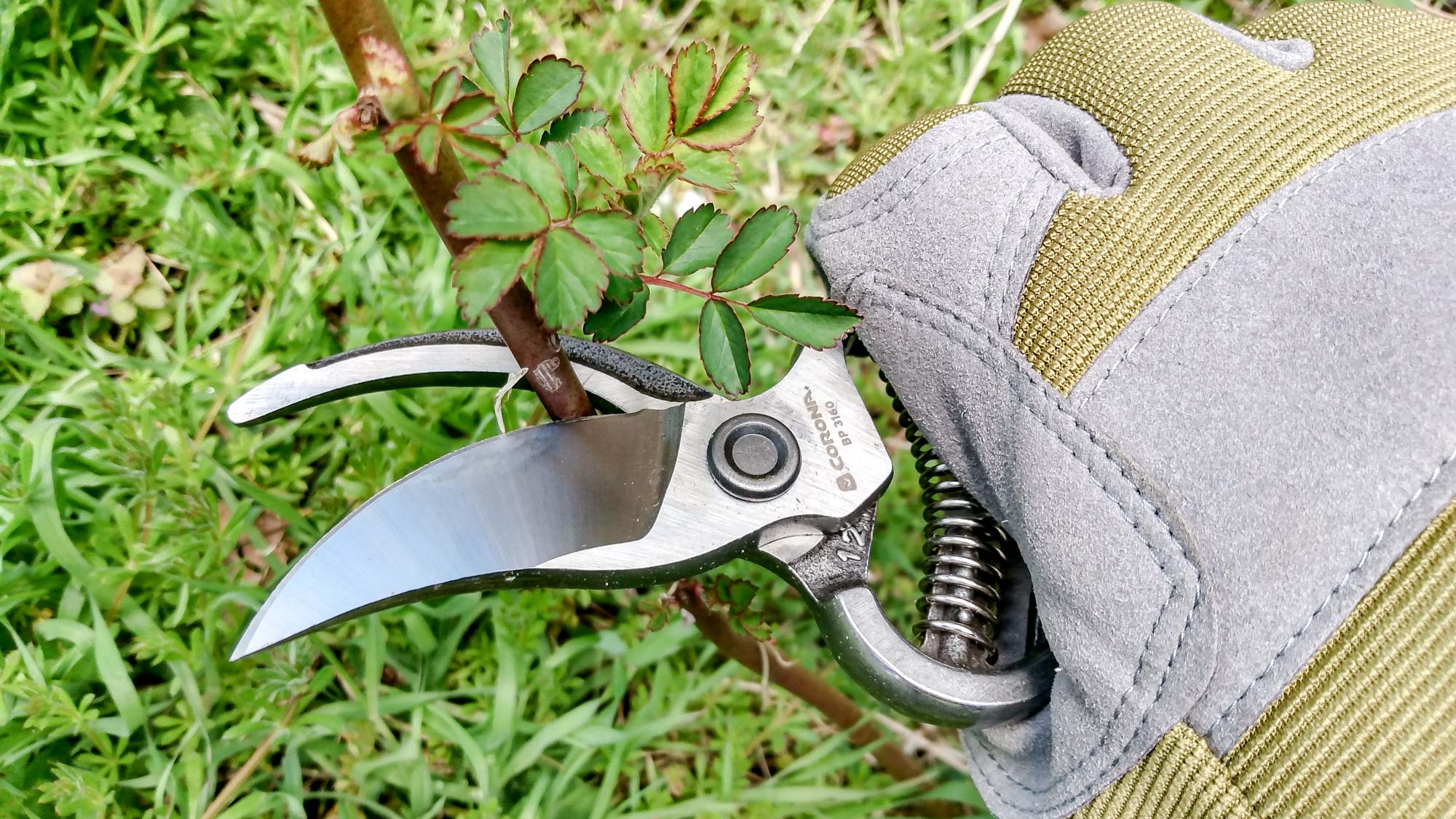
3. Corona ClassicCUT
Our expert review:
Specifications
Reasons to buy
Reasons to avoid
The Corona ClassicCUT ¾” is a great pruner and a pleasure to use. It has a very simple yet rugged design with only a few parts. While lacking in some ergonomic features such as wide, curved handles or a traditional thumb lock, the ClassicCut was surprisingly comfortable to use and maintained its smooth, tight action well after over 100 cuts. The MAXFORGED high-carbon steel blade showed no visible signs of wear and kept an incredibly sharp edge after repeated use on both live and dry branches.
The simple design of the Corona ClassicCUT allows it to be used in both the right and left hand. For under $20, it is definitely in the realm of “budget pruners,” however, it was able to perform as well as other heavy-duty professional pruners several times more expensive. The tool locking mechanism was the only real area of frustration as it was difficult to use with gloves on and difficult to engage single-handedly.
The Corona ClassicCut ¾” seemed to fit the medium-large range for hand size. The spring of the tool is strong and held firmly in place. The tool also features a built-in sap groove in the bottom blade to help prevent the shears from gumming-up when working with evergreens or other sappy plants. The ¾ inch model is their mid-sized pruner of this design, with a ½” and 1” cutting diameter also available. Overall, this no-frills pruner offers solid performance and likely years of reliable use.
Best professional
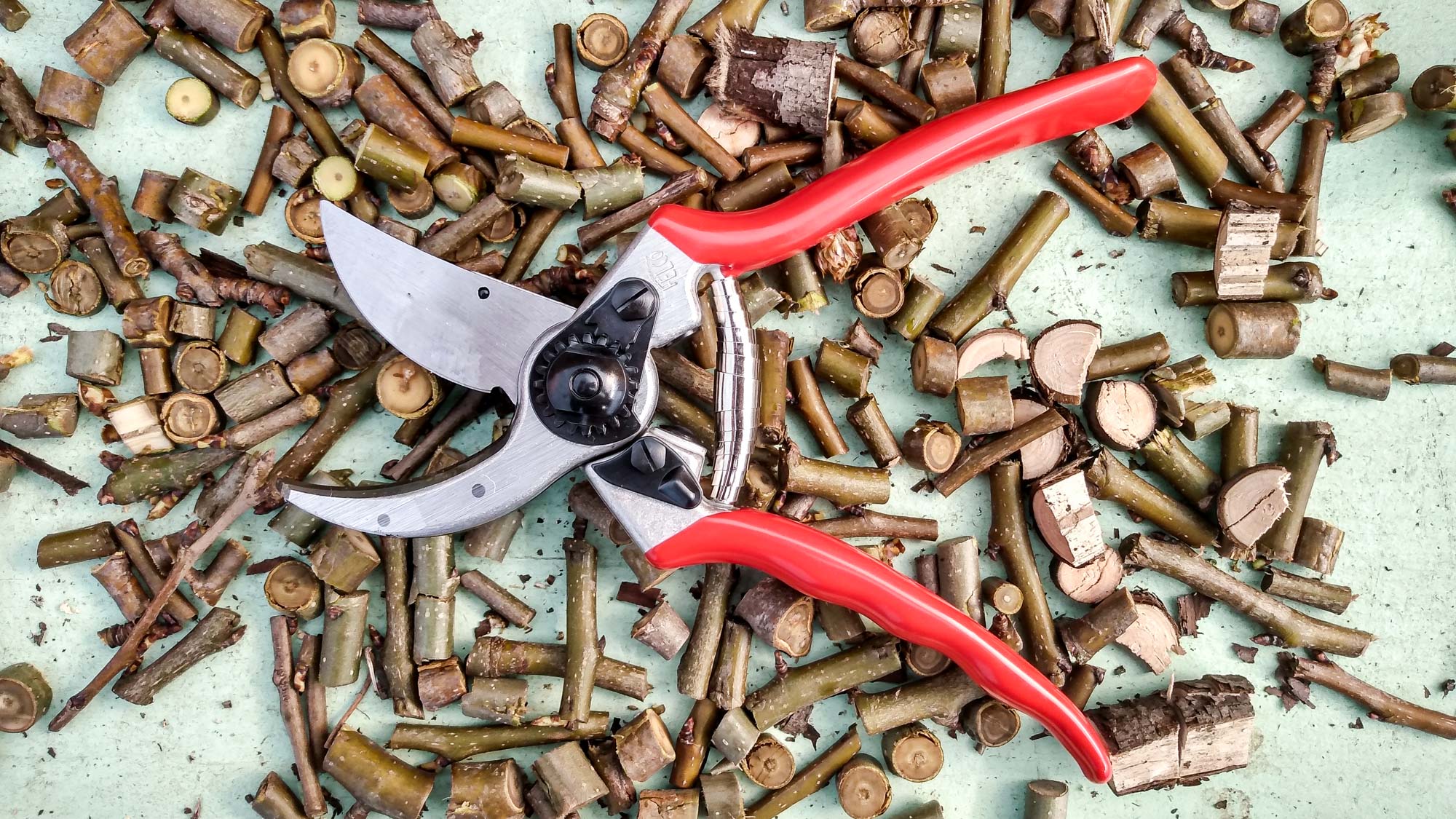
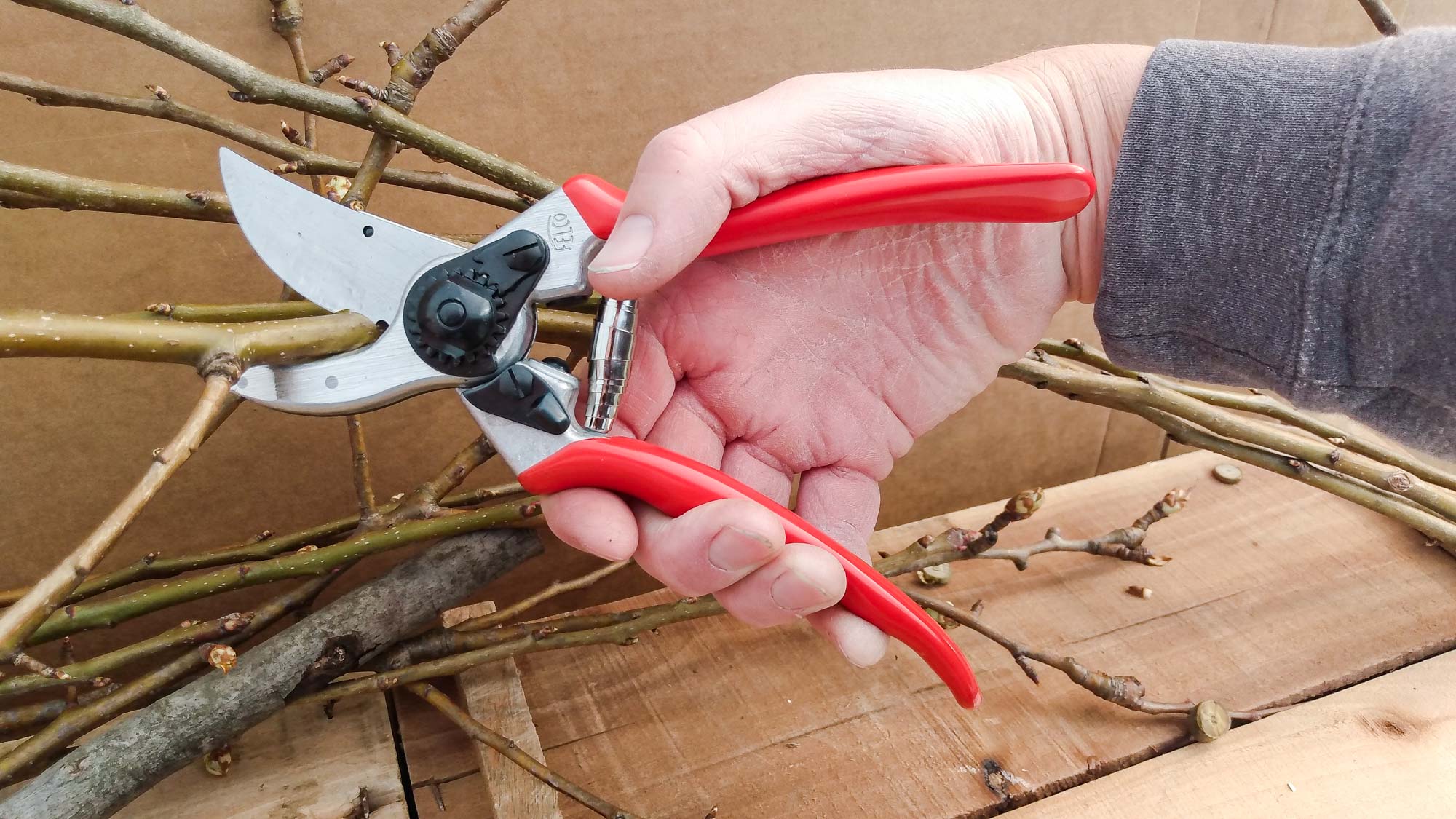
4. Felco 2
Our expert review:
Specifications
Reasons to buy
Reasons to avoid
The Felco 2 bypass pruners are an industry standard and are the #1 pick for most professional landscapers and orchardists. Originally designed in 1948, the Felco 2 has become one of the most copied designs of bypass pruners on the market. In fact, you must be careful of companies selling knockoffs of this product because it has such a good reputation.
There is a reason the Felco 2 has become known as the last pruner you’ll ever buy. This heavy-duty pruner is incredibly well made — it has an ultra-sharp blade, comfortable handle (for larger hands), easy to use thumb-lock and is intuitive to tighten and maintain. The cutting action of this pruner is easy on the hands for repeated cuts; that’s why it is the go-to pruner for people who use them all day, every day. On test, it smoothly and cleanly cut through both green and dead wood with minimal crushing. This pruner was especially great for pruning green sucker branches from apple trees as well because it could handle both the small and the larger diameter cuts.
The Felco 2 is a right-handed pruner designed for users with large hands. They do have other options for left-handed users. The drawback of the Felco 2 is that it lacks some of the ergonomic features of their newer models (such is found on the Felco 6 that is designed for medium-sized hands). Users with some smaller hands or carpal tunnel issues may find issues using this pruner. While it is on the high end of the price range for pruners, the value is well worth it when you consider the years of reliable use you get.
Best for problem hands
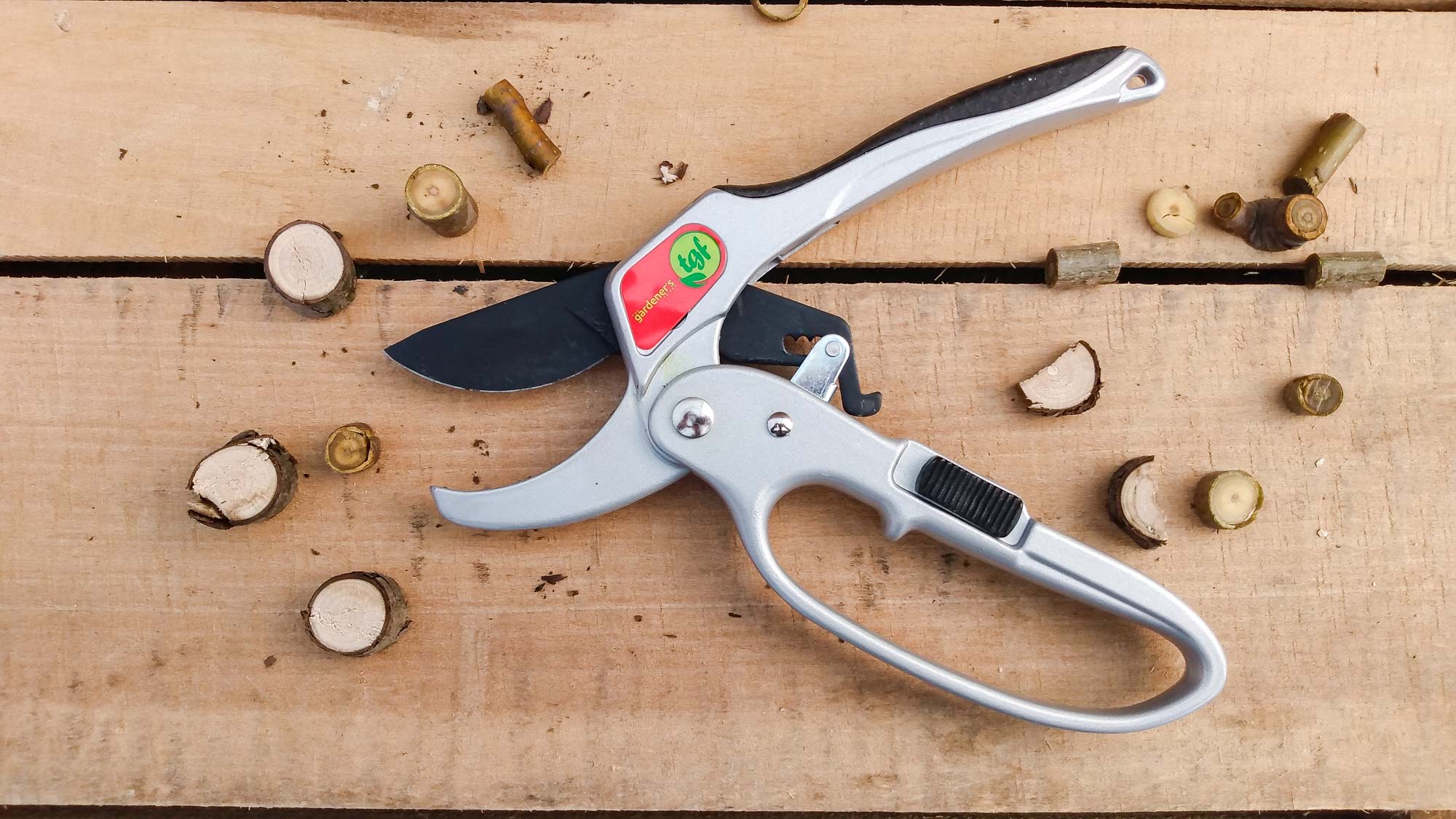
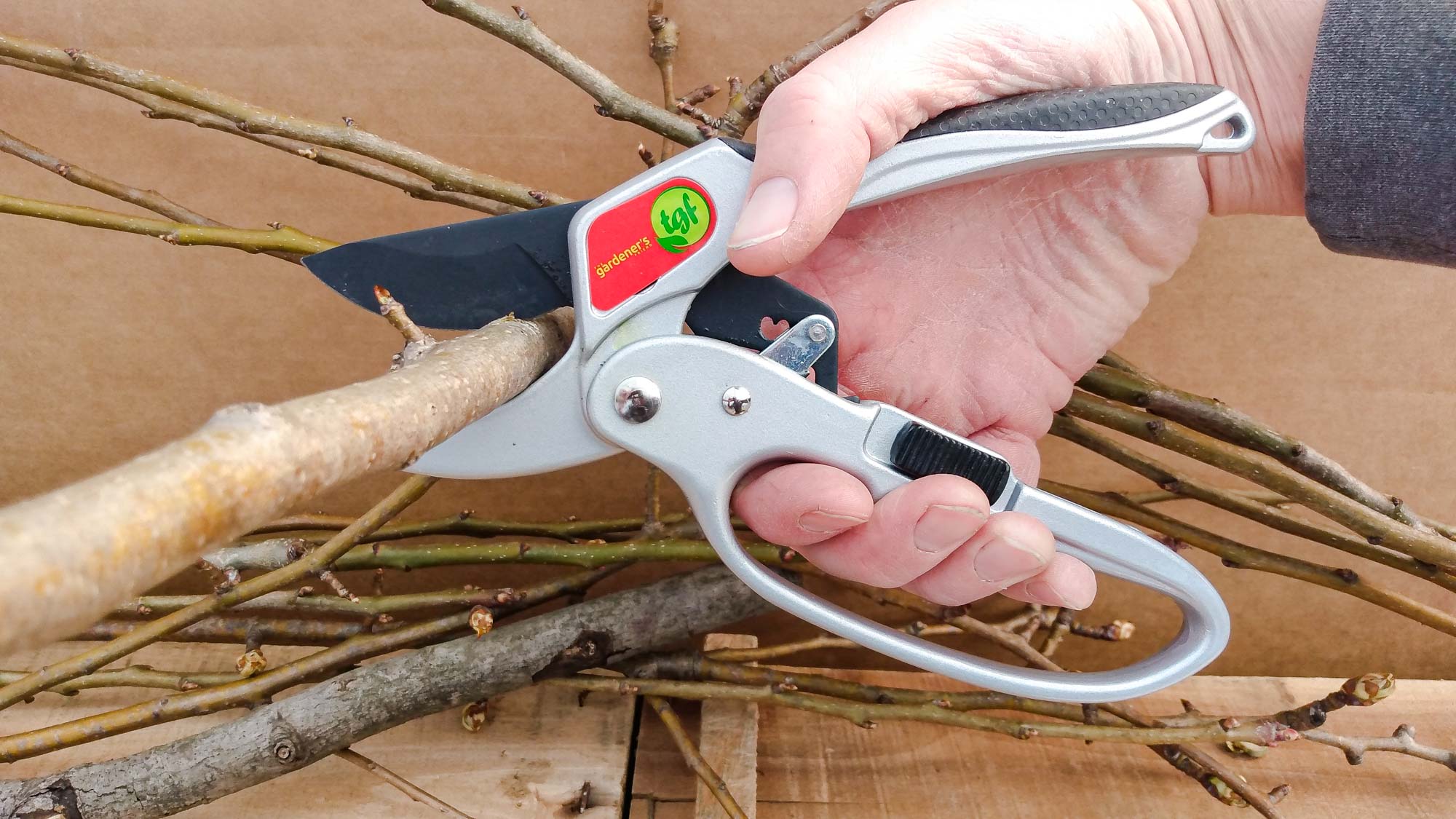
5. The Gardener’s Friend Ratchet Pruning Shears
Our expert review:
Specifications
Reasons to buy
The Gardener’s Friend Ratchet Pruning Shears offer a very functional ratcheting system that makes cutting thicker or harder branches a breeze. Each squeeze of the handle drives the blade further down towards the anvil until the stick cuts through. This spreads difficult cuts into up to four squeezes, greatly reducing the amount of hand strength needed for pruning.
This pruner comes with oiler pads to help with the oiling process, a very sharp blade and has a built-in knuckle guard to help protect your hand. It is designed for medium to large handed individuals and can be operated in either the left or right hand. I appreciated the internal spring which is unlikely to ever get knocked out and lost. The pruner was comfortable to use and had a very solid feel. It consistently cut through dead wood of various shapes and diameters without much crushing or stripping of the bark.
What I liked most about Gardener’s Friend pruner was that you didn’t always have to rely on the ratcheting system. If you have the strength to cut through the stem in one go, just squeeze the handle and cut. If not, release the handle slightly and the ratchet is automatically engaged. It was very simple and satisfying to use. If you’re looking for a very user-friendly anvil pruner that also doubles as an easy-to-use ratcheting pruner, this one has it all. I would put it as the go-to for anyone with carpal tunnel or hand strength issues. Overall, I was highly impressed with the Gardener’s Friend Ratchet Pruning Shears — it’s definitely one of the best pruning shears.
Best sharp blade
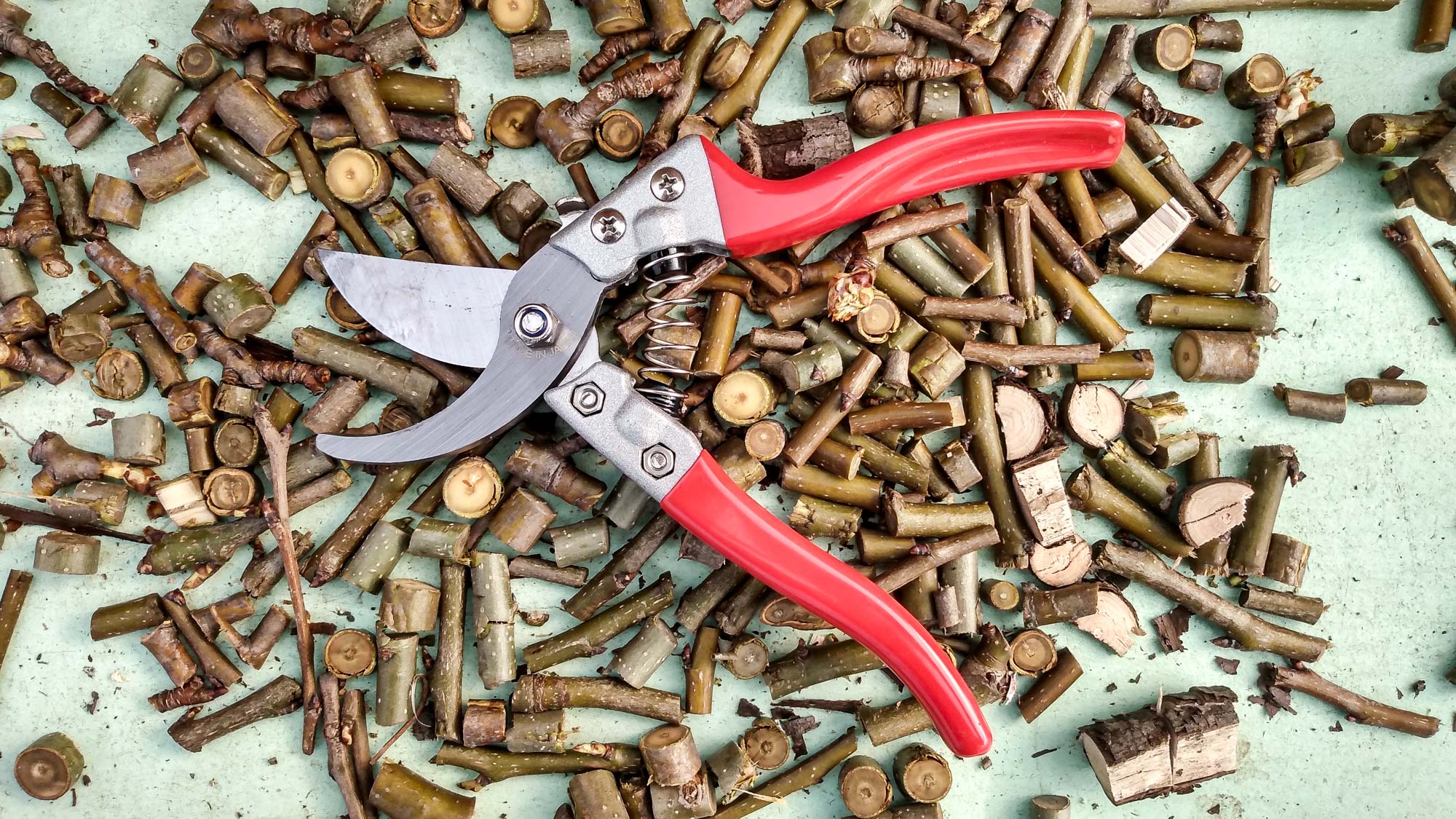
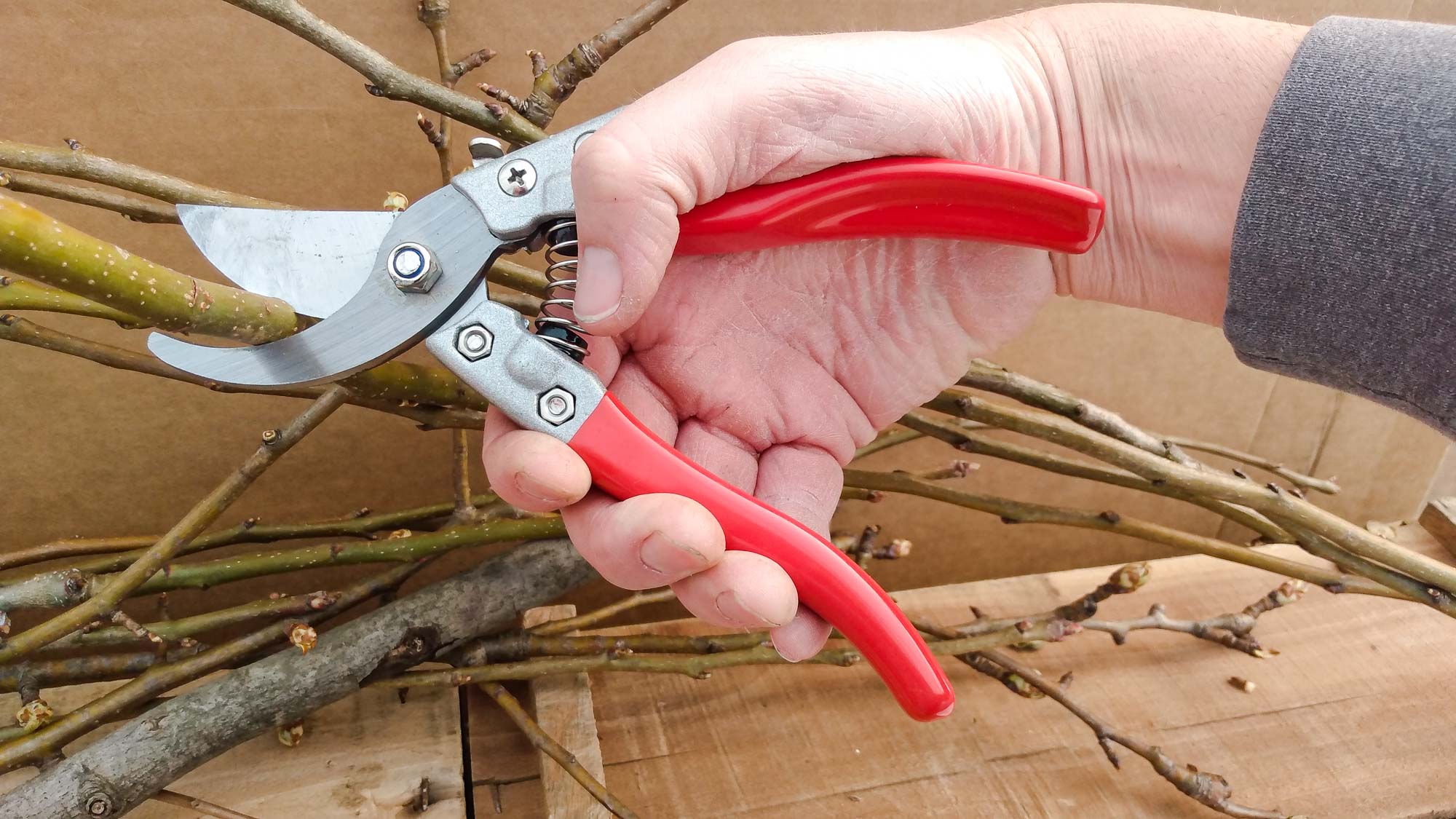
6. ARS VS8Z
Our expert review:
Specifications
Reasons to buy
Reasons to avoid
The Japanese ARS VS8Z had the sharpest blade of all the pruners that were tested. It easily and smoothly performed over 100 cuts through up to ¾”-thick live and dead wood and was still able to cleanly cut through a piece of paper afterwards. The non-slip handles are nice and bright, making it easy to find if dropped on the ground. Although they are designed for right-handed individuals, they were not uncomfortable to hold in the left hand.
The ARS VS8Z has a unique “Squeeze to unlock” thumb lock on the top of the device. Some consumer reviews showed issues with the lock over time, but I found it easy to use. The pruner did tend to loosen after about 50 cuts, but was easy enough to tighten. For some reason, the pruners came with the blade dripping with oil. It was easily wiped-off, but slightly annoying out of the box. The biggest concern was how easily the spring popped out of the device when snagged on a branch. The spring in the ARS VS8Z dislodged easier than any other pruner in this review, making it a dealbreaker for someone who frequently reaches deep into trees and bushes to prune branches. However, if you are just using it around the lawn and garden you will probably be very satisfied with the product. The extremely sharp blade combined with the ergonomic feel of the handle made cutting easy and satisfying.
Best for weak hands
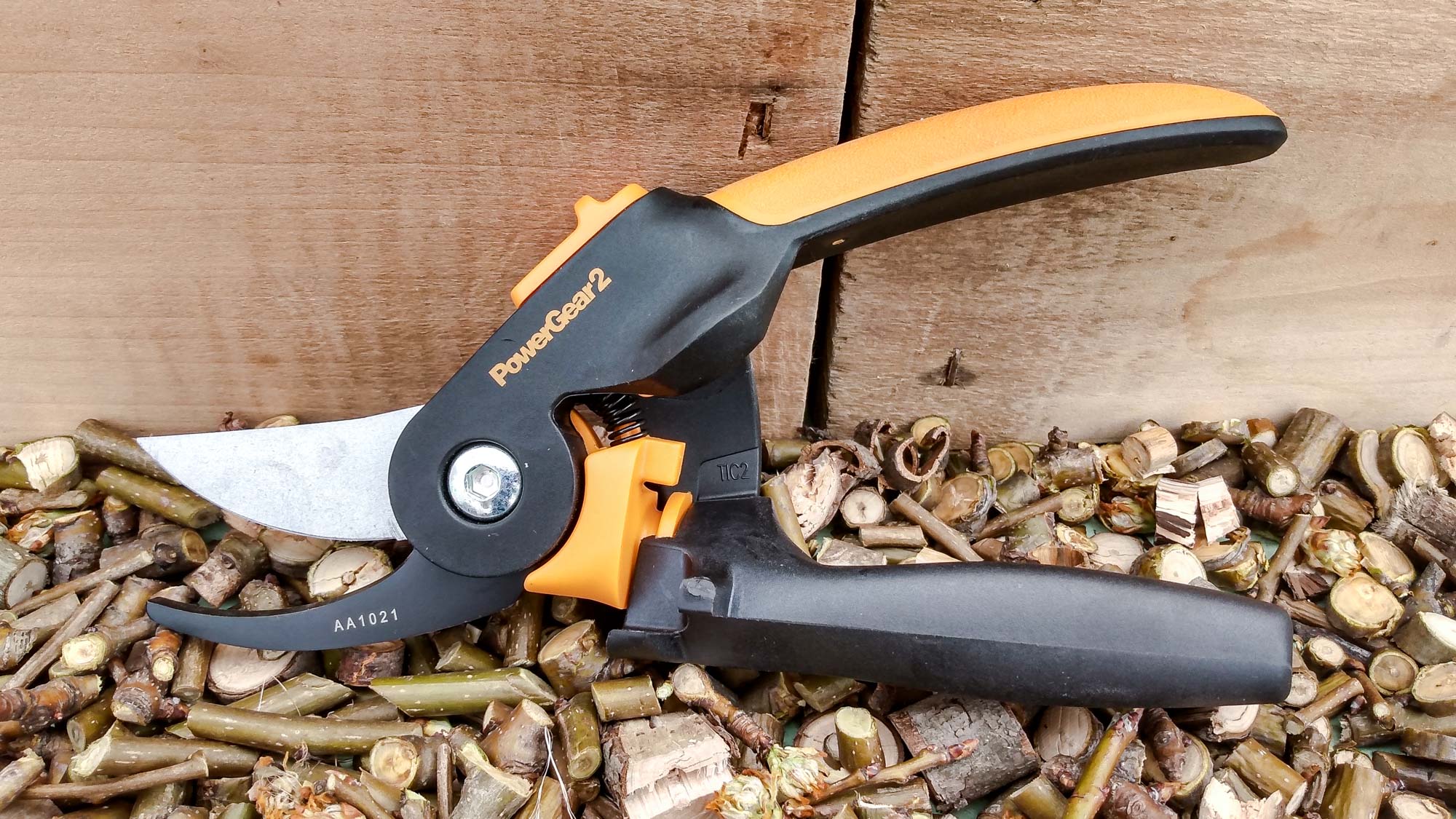
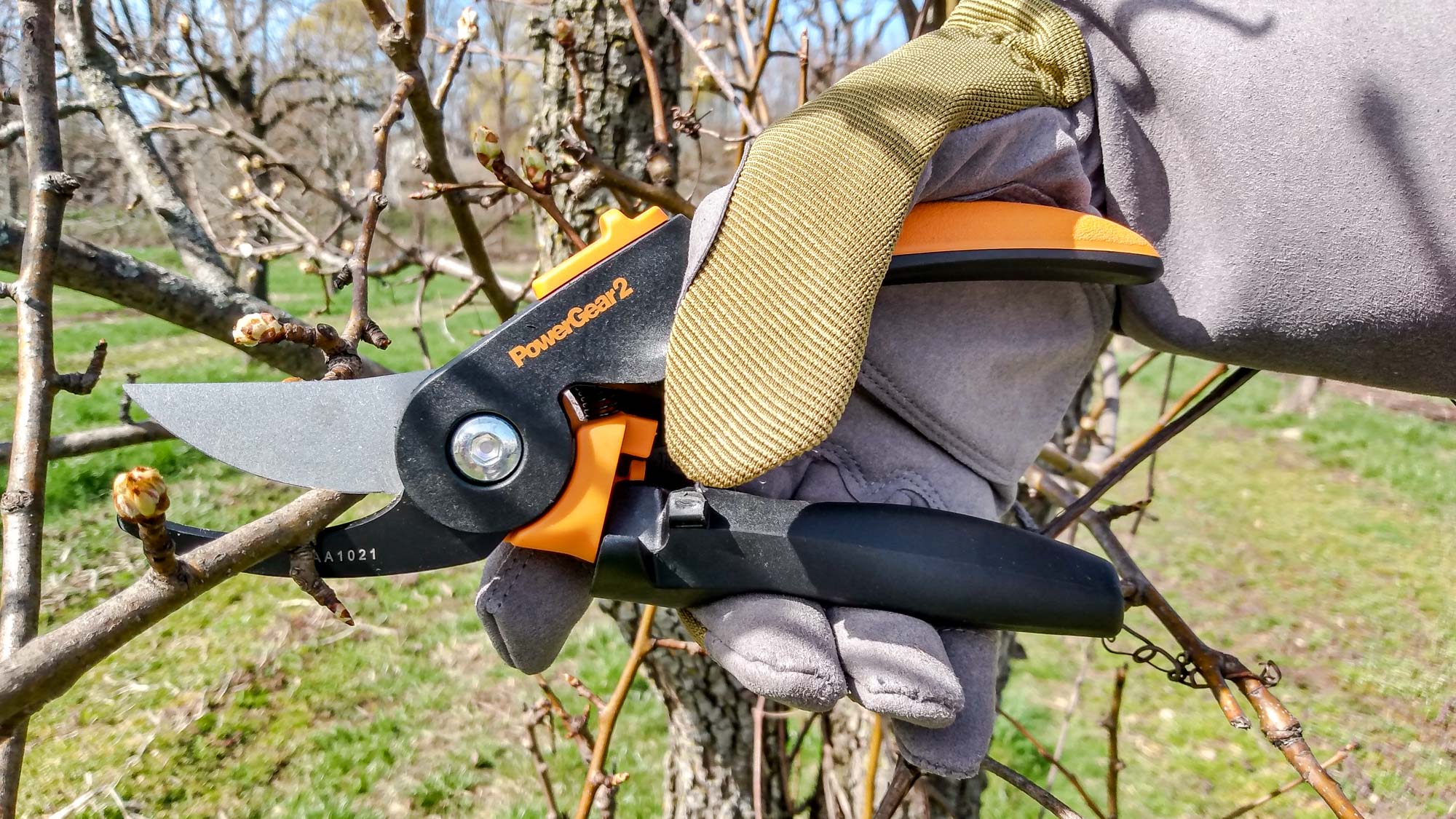
7. Fiskars PowerGear2 Softgrip
Our expert review:
Specifications
Reasons to buy
Reasons to avoid
The Fiskars PowerGear2 was a pleasant surprise. Its unique rolling cam gear mechanism delivers up to 3X more cutting power with less effort compared to standard pruners. While many pruners that use gears or ratchets can be clunky or cumbersome, the mechanism in the PowerGear2 was exceptionally smooth. I was surprised at how easy it made larger cuts and how comfortable it was to use over an extended period of time.
The sturdy design worked well past 100 cuts. Although it is wider than normal pruners, it was still able to get into tight spots. The blade stayed tight after repeated use with no side-to-side movements. The thumb lock worked well and the ‘Soft Grip’ was comfortable for long pruning sessions. The safe spring placement made it unlikely to be knocked out or lost over time. Overall, I was extremely satisfied with this pruner and would recommend it to anyone who might have issues with hand strength. The only major drawbacks of the design is that it ONLY works in the right hand, and requires a large hand to use.
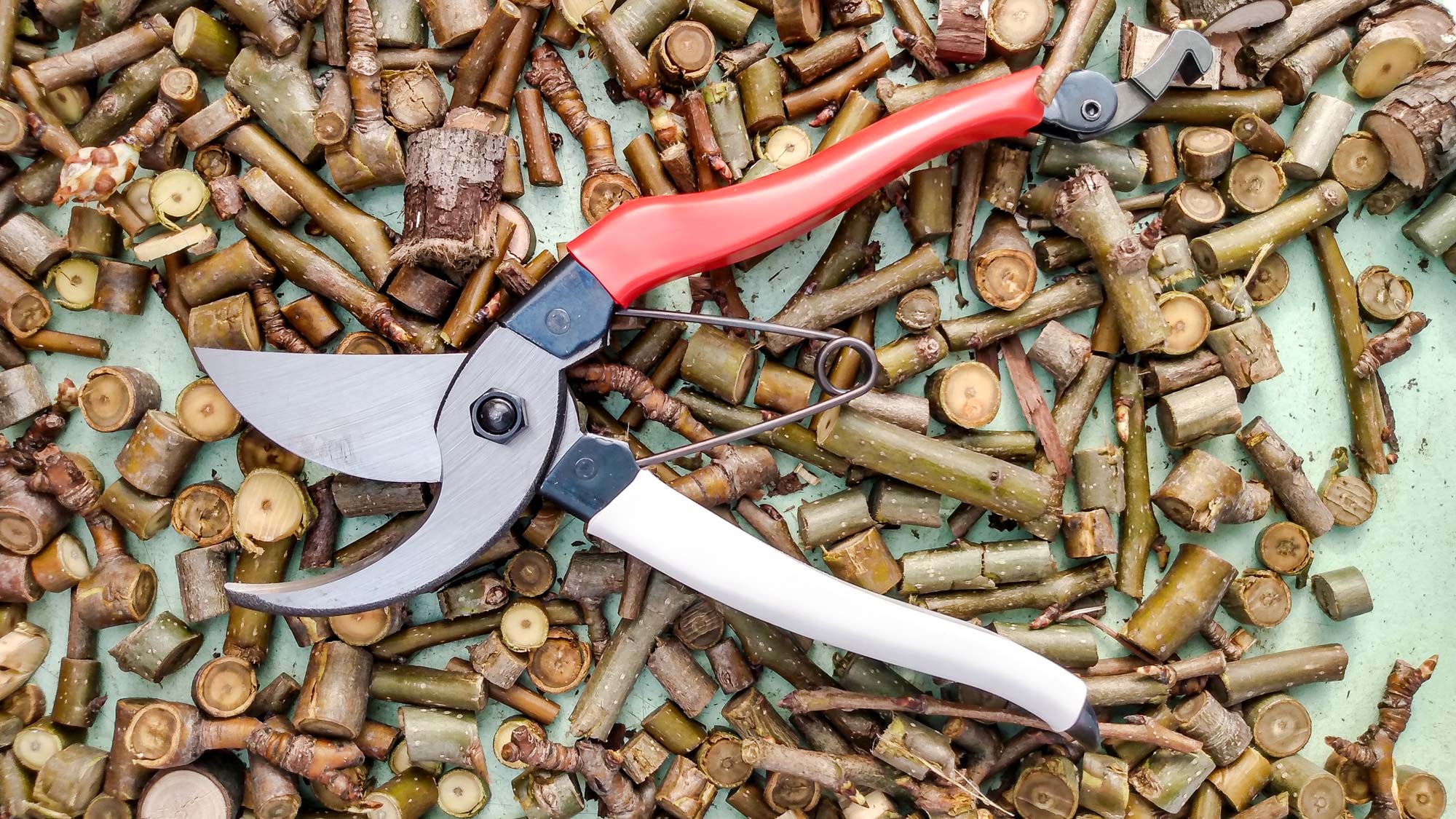
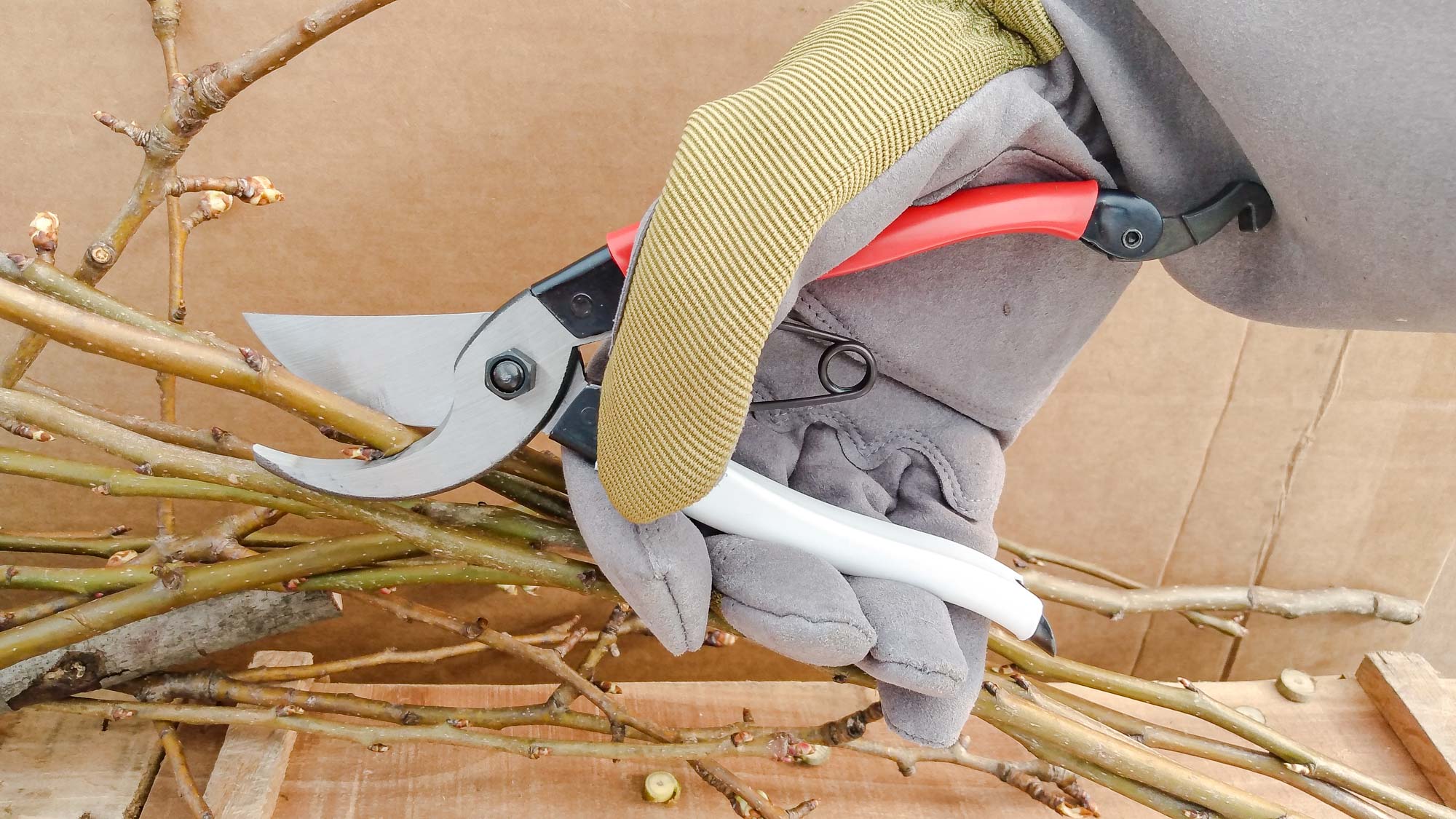
Best steel blade
8. Okatsune 103
Our expert review:
Specifications
Reasons to buy
Reasons to avoid
The Okatsune brand is starting to develop a cult following outside of Japan as more and more gardening enthusiasts are swearing by this pruner. Its hardened steel Japanese-forged blades are rated amongst the hardest on the market and promise to offer numerous clean, sharp cuts before needing sharpening. In fact, after over 100 cuts of wood up to an inch thick, it was able to cut paper like it was a new pair of scissors. There are several knockoffs on the market, so do some research into the vendor and don’t expect to find one under $45.
The vinyl coated handles have a hollow u-shape design that significantly reduce the overall weight of the pruners compared to others of the same size. The brightly colored handles make the Okatsune 103 easy to find and are designed to be held in either the left or the right hand. Some features that are unique to this product are its large safety pin style spring and the heavy-duty heel lock. While initially locking and unlocking the tool one handed was an issue while working from a pruning ladder, I found it could be easily done by using my hip as a force to open and close the lock. Overall, it has a very simple design with few parts and that makes it very easy to maintain.
The Okatsune 103 is a medium-length model. However, that does not mean it fits people with medium-sized hands. It requires a very large handed grip. Although I wanted to like these pruners, there was a major flaw in the design which others have pointed out. The ergonomics are severely lacking —the handle was awkward and slippery, with and without gloves. My hands kept sliding towards the hinge, requiring me to constantly adjust my grip after just a few cuts, potentially dropping the pruners in the process. It resulted in frustration and hand fatigue faster than any other pruner I tested. Having said that, the unrivaled hardened steel blade still makes this one of the best pruning shears, and it’s ideal for quick and small jobs.
Best electric
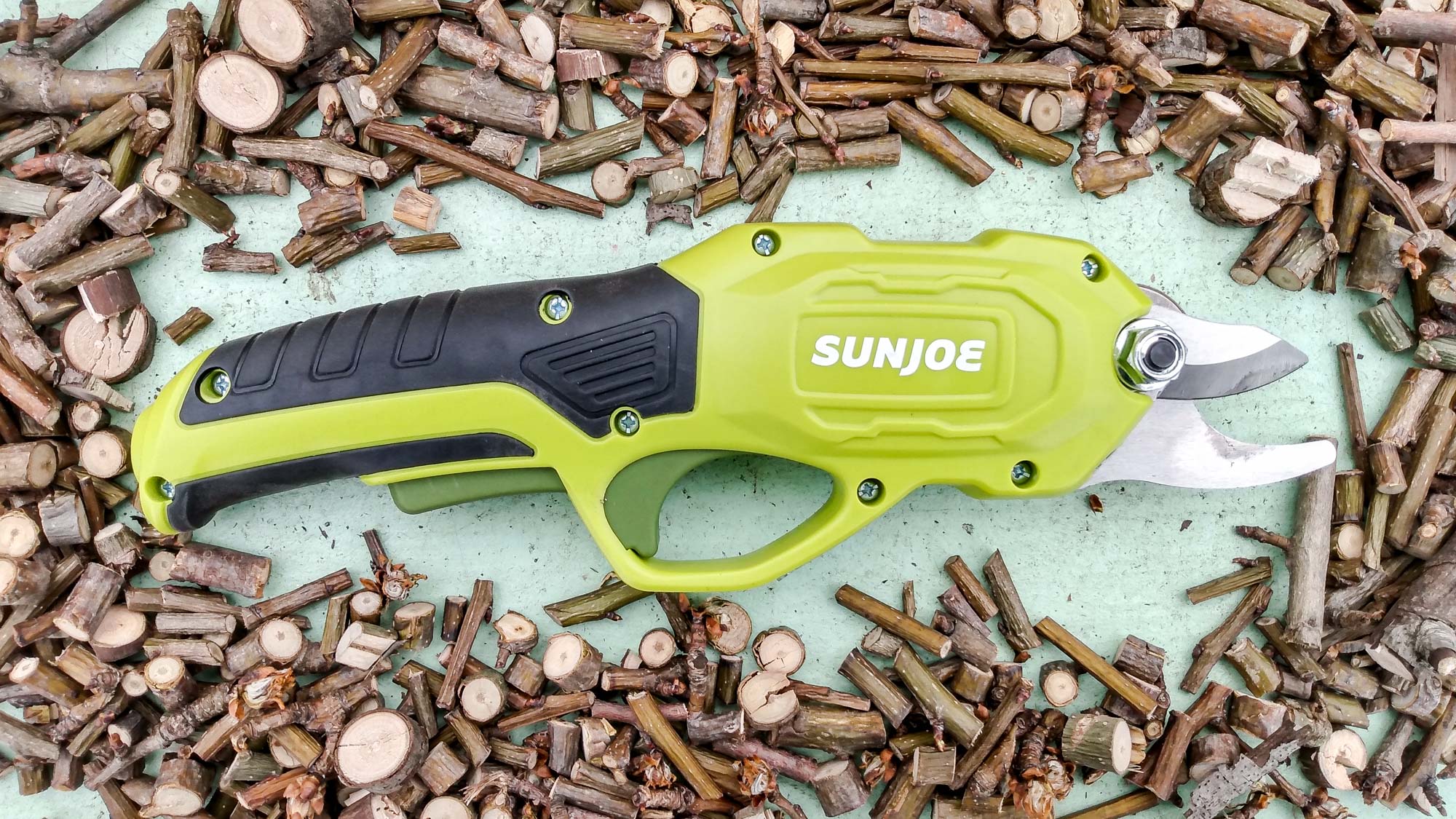
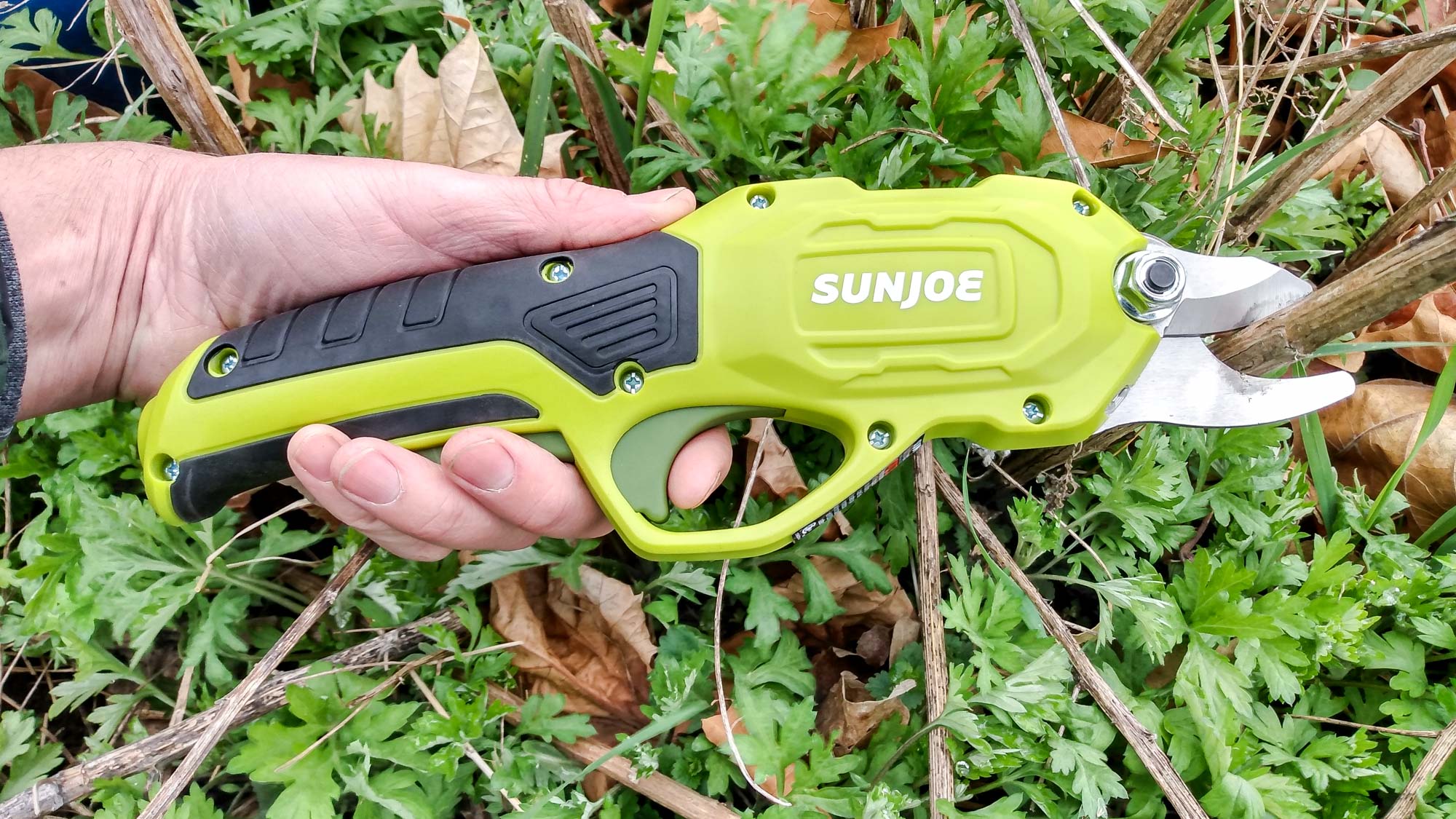
9. Sun Joe 3.6-Volt Electric Cordless Pruner
Our expert review:
Specifications
Reasons to buy
Reasons to avoid
The Sun Joe 3.6-volt Electric Cordless Pruner is an electric powered bypass pruner capable of cutting live wood up to ½” thick with the easy pull of a trigger. It features a rechargeable lithium-ion battery with an impressive factory claim of up to 750 cuts per 65-minute charge. At 1.4 pounds, it comes in way heavier than other pruners, however, the ease of pruning is a nice tradeoff for the weight.
This electric pruner is a light-duty machine. Do not expect to be cutting all the branches of a tree with this. When sticking to green (live) branches and stems under ½” in diameter, the pruner worked very well. It has a two-trigger safety system that prevents accidental activations. The blade takes less than a second to clamp down and automatically returns to the open position whenever the finger trigger is released. A charge indicator near the plug tells when the pruner is fully charged. Although there is no battery level indicator, you can audibly hear the pruner slow down when the charge is low.
The blades stayed sharp and nick free after over 100 cuts. There is an easy blade unlocking mechanism if you need to quickly replace or want to sharpen the blade in a vice. These Sun Joe pruners also have dual LED lights in case you need to make precise cuts in shady areas.
Some of the drawbacks are that they are not at all weather resistant, so I would avoid using them in damp spaces. Also, they are wider than manual pruners, which can make it difficult to make close cuts. The product has mixed reviews from users who experienced issues with the battery overheating or the blades coming out. I did not experience any of those issues. In my opinion, the Sun Joe electric cordless pruner worked very well and is ideal for thin green branches and flower stems. For those with hand strength or arthritis issues, this might be a nice option to keep you in the garden.
Best lightweight

10. Gonicc 8” Professional SK-5
Our expert review:
Specifications
Reasons to buy
Reasons to avoid
The Gonicc 8” Professional SK-5 anvil pruner uses a unique “pulley mechanism” inside the handle that slowly increases the blade pressure on the wood as you squeeze. This reduces the amount of effort it takes to cut each branch and lessens hand fatigue. The SK-5 in the name refers to the very sharp high-carbon steel blade that easily cut through 100 dead sticks of all sizes up to ¾” thick. Its aluminum body is very lightweight, yet feels sturdy and reliable.
The Gonic 8” Professional SK-5 anvil pruner has an ergonomically designed handle to be used either in the right or left hand. I found it to be rather slippery without gloves, but it worked well with gloves on. While the sliding thumb lock was conveniently located, I did find I would occasionally knock it into the locked position while pruning with gloves on, resulting in some frustration.
Perhaps I received a faulty unit, but there was a rivet that partially stuck out from the pully mechanism that would constantly rub against my finger. This made it uncomfortable to use over a long period of time. This pruner was also by far the noisiest manual pruner I tested with both the spring and the pulley singing along with each cut. Even though it did cut very well, these design flaws made it frustrating to use at times and moved this pruner lower down on the recommendation list. It’s a great price for the performance you get though.
Best budget
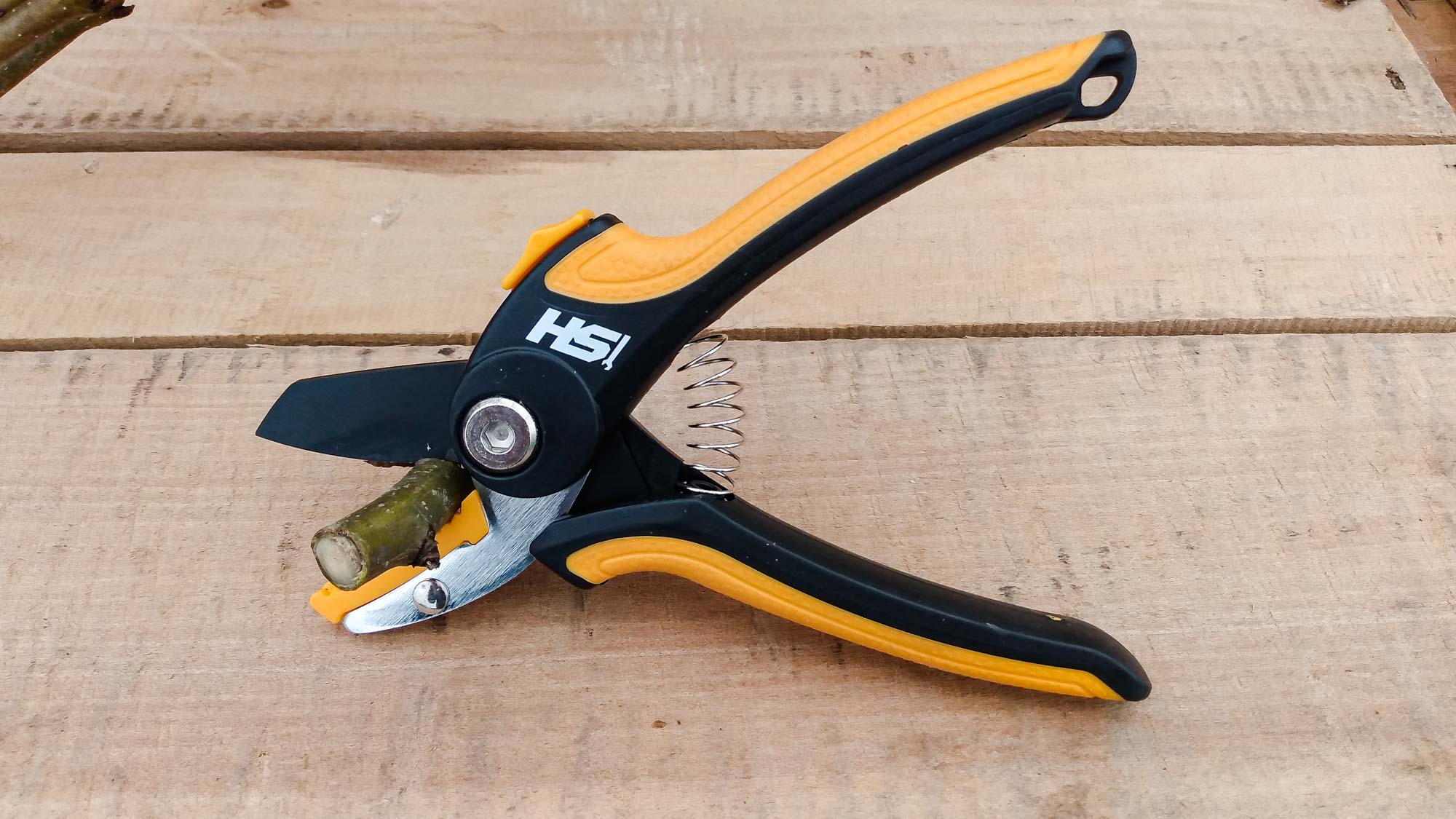
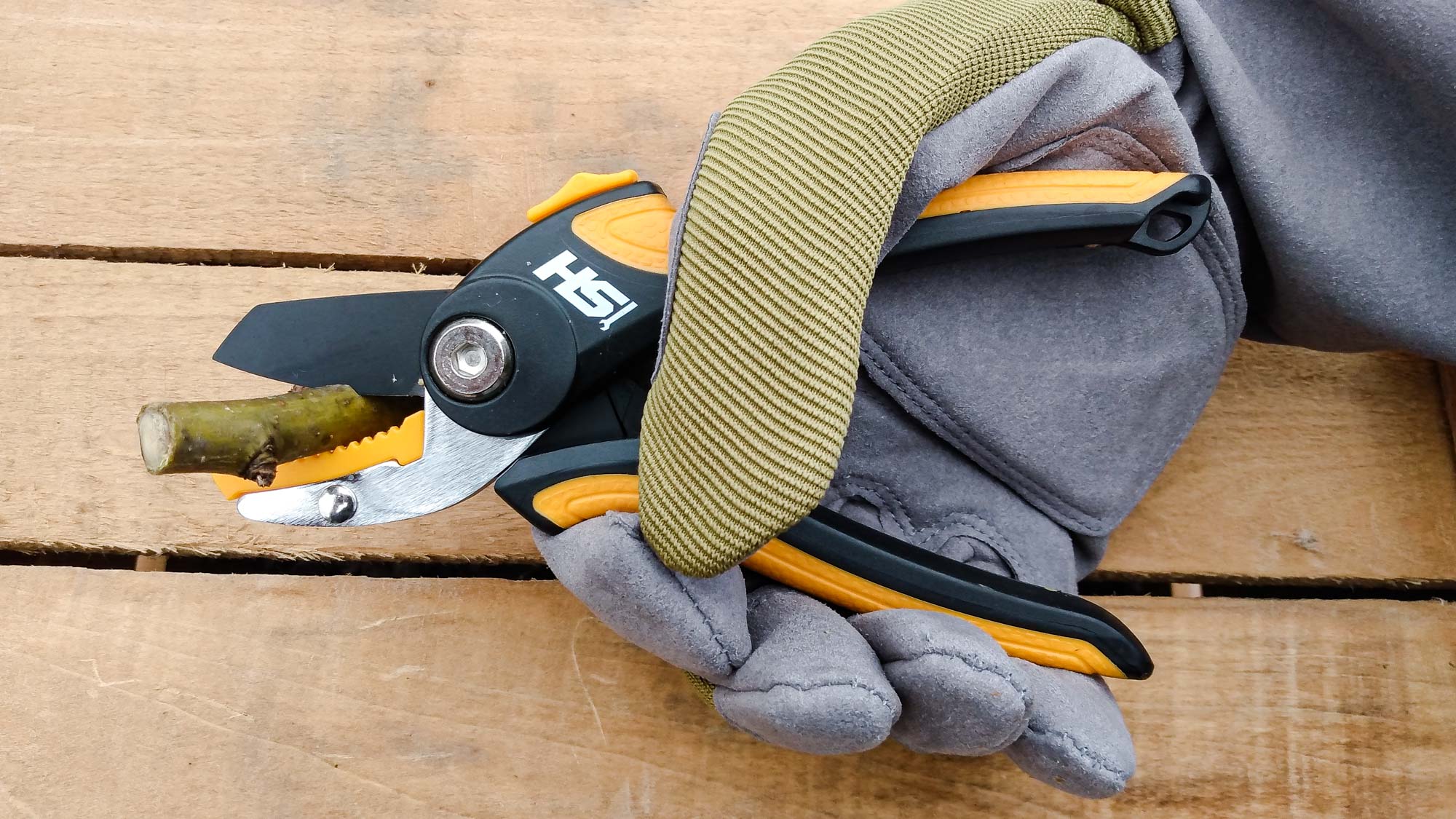
11. STEELHEAD 7” Anvil Pruning Shears
Our expert review:
Specifications
Reasons to buy
Reasons to avoid
The STEELHEAD 7” Anvil Pruning Shears have an extra-sharp, high-carbon steel blade and a very comfortable grip. The handles are ergonomically designed for both right and left-handed use, and the plastic thumb lock is conveniently placed on the top of the head. These pruners consistently performed well in over 100 cuts of dead wood up to ½” thick without causing too much crushing damage.
At under $10, these are the least expensive of all the pruners tested. They should be considered a light-duty anvil pruner due to its small diameter capacity and plastic anvil. While the website says they are rated for 5/8 inches, the box they arrive in says .4 inches, which is very small for a typical anvil pruner. The spring has nice action, but is easily knocked out. While they did work very well, I have trouble thinking of scenarios when you would want an anvil pruner that is rated for less than half an inch, but you never know. These are the best pruning shears if you’re after a small, light-duty anvil design and you’re shopping on a budget.
How we tested
How we selected and tested the best pruning shears
There are hundreds of pruners available on the market. The pruners chosen for this test were selected because they ranked amongst the highest in terms of product reviews from reputable brands and vendors. We were looking for a pruner that created a reliable, clean cut, with minimal crushing of the wood or tearing of the bark. It had to be relatively comfortable in the hand and at minimum have a hardened steel blade.
As mentioned earlier, each of the pruners featured in our best pruning shears list were hand tested by an experienced farmer while pruning fruit trees and ornamentals. Each pruner went through at least 100 cuts of wood and stems of various diameters. Most of the wood used was either apple or pear wood with a diameter of up to 1-inch thick. Live and dead wood was used for bypass pruners and dead wood was used for the anvil pruners. Flower stems were used to test thin green cuts. At the end of testing, all bypass pruners also went through a papercut test to see if the blades had stayed tight and sharp enough to cut a thin piece of paper.
Several other pruners were tested for this feature and many literally did not make the cut to be included in our ranking.
Pruner types
There are different types of hand pruners for different types of uses. It really depends on if you’re cutting a living plant or dead wood.
Bypass Pruners are by far the most popular style of pruners and are ideal for cutting and pruning living plants between 10 and 15mm thick. They work like scissors; when the handle is squeezed, a very sharp top blade slides past a duller bottom blade leaving a clean, smooth cut. The cleaner the cut, the faster the plant will heal and the more resistant the cut will be to disease. Therefore, it’s important to keep the blade clean. There are a few new electrical and gear-driven bypass pruners on the market for those that might have arthritis or carpal tunnel issues and a couple of them have made it into our top picks.
Anvil Pruners are ideal for cutting dead wood. When the handle is squeezed, a sharp top blade drives down against a flat surface (called the anvil). This gives the pruner more cutting power with less effort. However, it is not a ‘clean’ cut and can often crush branches and stems. If used on live plants, it can result in stripped bark or a rough cut that leaves the plant open to infection.

Ratcheting Pruners have a mechanism that helps you cut through dead wood in stages. They are ideal for cutting through wood with a thicker diameter or if you lack hand strength. Instead of using one squeeze to produce a cut, ratchet pruners distribute the effort by cutting up to four times. Each time the handle is squeezed the blade drives further into the wood, until it cuts it through. They will help to reduce the strain on your hands and wrists, although repetition is needed.
Pro tip: If you’re pruning wood from a sick tree or bush, dip the pruner head in isopropyl alcohol before moving on to a healthy branch. This will limit the spread of disease.
Selecting a pruner
Pruner prices can vary from under $10 to over $100. When selecting a pruner, purchase the best you can afford from a known, reputable brand.
Many consumers assume that the larger the blade and blade opening on a pruner, the thicker it can cut. However, the real limiting factors are often hand strength and the size of the handle opening. It is better to get a tool that fits you than to get a tool that is too big and prevents you from getting the leverage you need to make the cut.
As someone who uses pruners as part of my job, here are a few features I look for:
- Make sure you get a pruner that fits your hand size and has a good grip. Most professional pruners are designed for large hands and right-handed users, but there are some options.
- Choose durability over budget. Although some cheaper brands offer lifetime warranties, it’s usually best to purchase a more expensive pruner that will last a lifetime.
- Read the product details and make sure the pruner has a hardened steel blade, ideally “high-tempered carbon steel.”
- Pruners are surprisingly easy to lose, so the brighter the color of the handles, the better!
- Make sure the blade can be easily removed, tightened and sharpened with basic tools.
- Pruner springs often rust or get knocked out. Make sure you can easily find replacement parts.
Some pruners offer titanium coatings and non-stick rust proofing, but I typically don’t consider those a long-term benefit since the coatings wear off after extended use and sharpening.
How to choose
Choose the best pair of pruning shears for your needs
If you’re new to gardening, a pair of bypass pruning shears will get you off to a good start, but if you’re more experienced, you might be interested in a pair of anvil or ratchet pruners, as they are better at cutting through dead wood.
You also need to consider the size of your hands, and whether you need to opt for a small, medium or large pair as if your hands are on the small size, you might find a standard size difficult to operate and vice versa. My favorite pair of secateurs have a beautifully ergonomic handle, so if this is important to you, this is a feature you’ll need to look out for. Another consideration is the weight; check the product information before buying online, or if you're buying in person, ensure you try before you buy.
Use and maintenance
Hand pruners work best if the wood or stem you are cutting is placed as deep into the jaws of the device as possible. Most bottom blades and anvils are now curved to help hold whatever you are cutting into position. Do not twist the pruner as this can bend the blade and possibly break the tool. Some wood, like oak, is very strong and even a small branch can be difficult to cut. Don’t force it. Use lopping shears if the wood is too hard.
Pruning can be hard, repetitive work. Here are a few steps to keep your tool in tip-top shape and make it work as efficiently as possible. Your hands will thank you for it.
- Over time, all bypass pruners will loosen and form a gap between the blades. This is normal. A quick tightening of the hinge screw will help ensure a clean cut.
- The cutting blade will dull over time making it harder to cut. Having a fine-toothed metal file available can help ensure your blade stays sharp between uses. Learning how to sharpen pruning shears at home will save you money in the long run.
- Pruners should always be wiped down before storage to remove any sap, dampness or debris that could cause rust or gum the hinge. A quick spray of WD-40 or a wipe-down with a rag and some mineral oil will greatly extend the life of your pruners.
Safety
All pruners have at least one very sharp blade, so safety is very important. These tools are not designed for children and should be stored appropriately. Make sure you keep the blades in the locked position when you are walking around with pruners, and ideally carry it in a sheath or holster on your hip instead of in your hand or pocket. Also, always wear proper fitting gloves and eye protection whenever you are pruning.
Sign up to get the BEST of Tom's Guide direct to your inbox.
Get instant access to breaking news, the hottest reviews, great deals and helpful tips.
Rich Woodbridge, who holds an MBA from UCSD, owns and operates McCollum Orchards, a 100-acre organic fruit, vegetable and flower farm that has been family-owned since 1827. He has a background in corporate market research — testing and developing consumer products in several industries, from sustainable energy technologies to farm and gardening equipment in the U.S. and internationally. When not in the field, Rich connects farmers to the latest research, methods and technology as an agricultural business educator for New York’s cooperative extension service.
- Camilla SharmanStaff Writer, Homes
